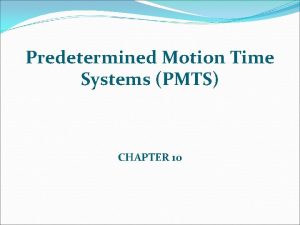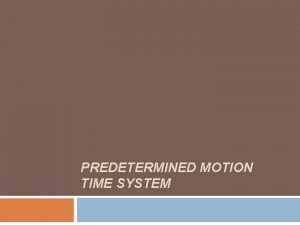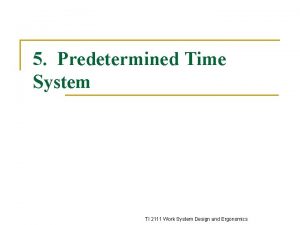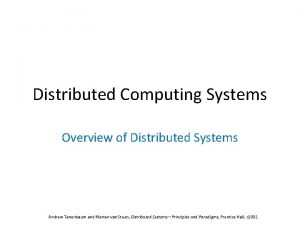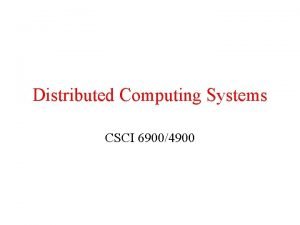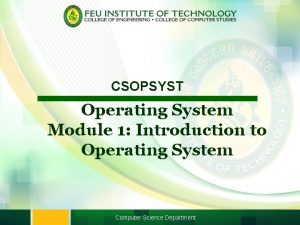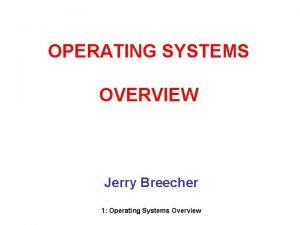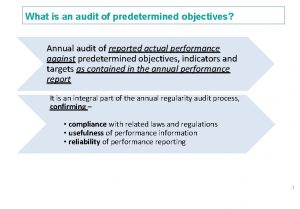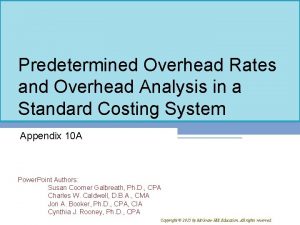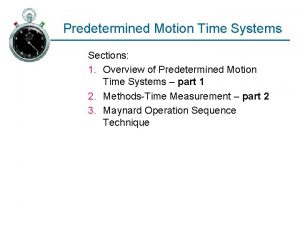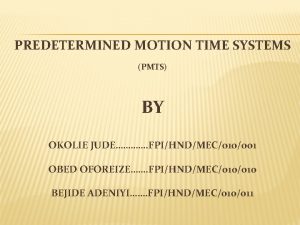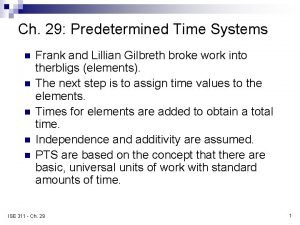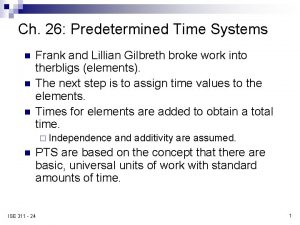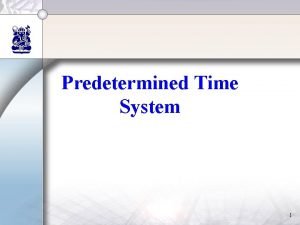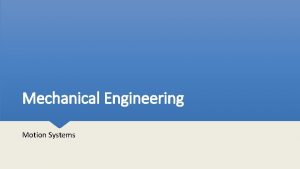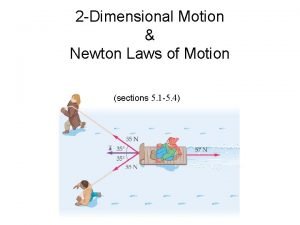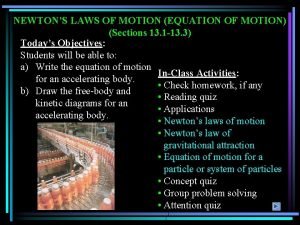Predetermined Motion Time Systems Sections 1 Overview of

















- Slides: 17

Predetermined Motion Time Systems Sections: 1. Overview of Predetermined Motion Time Systems – part 1 2. Methods-Time Measurement – part 2 3. Maynard Operation Sequence Technique

PMTS Defined § Problem with DTS: § involves performance rating § this’s based on judgment by time study analyst § disagreement can occur between worker doing task and analyst § Alternative to DTS is predetermined motion time systems (PMTS) § doesn’t involve PR step

PMTS Defined § General: A database of basic motion elements and their associated normal time values, together with procedures for applying the data to analyze manual tasks and establish standard times for the tasks § ANSI definition: organized body of information, procedures, techniques, and motion times employed in the study and evaluation of manual work elements. The system is expressed in terms of the motions used, their general and specific nature, the conditions under which they occur, and their previously determined performance times

PMTS Defined § PMTS database involves: § set of tables listing time values § values correspond to basic motions elements § determined based on extensive research of manual work activity § based on frame-by-frame analysis of motion pictures of activity § BME’s include: § Reach § Grasp § Move § Release (and others)

PMTS Defined § Time required to perform BME depends on certain work variables § e. g. time to reach object increases with the distance of reach § e. g. time to move object depends on its weight and distance moved § Contents of chapter: § General discussion of PMTS [1] § Two important examples of PMTS: § Methods-time measurement (MTM) [2] § Maynard Operation Sequence Technique (MOST) [3]*

Predetermined Motion Time Systems 1. Overview of Predetermined Motion Time Systems

1. 1 PMTS Procedure §

PMTS Procedure §

PMTS Procedure §

PMTS Procedure §

1. 2 PMTS Levels and Generations Various levels of PMT systems: § First-level PMT Systems: use BME’s § e. g. reach, grasp, and move used separately to define the task § Higher-level systems: combine several motion elements into motion aggregates § motion aggregates: combined “motion sequences” commonly used in work situations § e. g. reach and grasp combined into one element called get (used assembly work)

PMTS Levels and Generations §

PMTS Levels and Generations § PMTS Generations: § First-level PMTS’s: § chronologically: 1 st to be developed called 1 st gen. PMTS (e. g. MTM-1) § see reading handout § Second- and higher-level systems: § constructed based on first-level systems § called 2 nd and 3 rd generation systems § e. g. MTM-2 (based on MTM-1) and MTM-3

PMTS Levels and Generations §

Comparisons First-level PMTS Most accurate High application speed ratio Most suited to highly repetitive short cycles Basic motion elements Very detailed Highest flexibility Higher-level PMTS Less accurate Less time to set standards Longer cycle times feasible Motion aggregates Less detailed Less flexible

PMTS Levels and Generations §

Summary of PMT Systems
 Advantages of pmts
Advantages of pmts Tabel work factor
Tabel work factor Predetermined time standards
Predetermined time standards Distributed systems
Distributed systems Crtd sap
Crtd sap Distributed systems overview
Distributed systems overview Overview of operating systems
Overview of operating systems Operating systems overview
Operating systems overview What is real-time interaction management
What is real-time interaction management Elapsed time
Elapsed time Predetermined objectives
Predetermined objectives A predetermined course of action is-
A predetermined course of action is- Predetermined overhead rate
Predetermined overhead rate Predetermined overhead allocation rate
Predetermined overhead allocation rate How to calculate predetermined overhead rate
How to calculate predetermined overhead rate Recovery of overheads
Recovery of overheads Predetermined overhead allocation rate
Predetermined overhead allocation rate Graphic analysis of fixed overhead
Graphic analysis of fixed overhead
